By Louise Irvine
Turkeys have a long and delicious history at Thanksgiving. Apparently, more than 45 million turkeys are cooked for Thanksgiving feasts in America. In Britain, the turkey is more commonly served at Christmas dinner. Poultry is an unlikely subject for pottery but one of our favorite Holiday figures at WMODA is the Boy and Turkey modeled by Harry Parr.
We can only speculate why Harry Parr, a talented British sculptor, decided to present a little boy riding on a turkey as his submission to the Royal Academy’s annual show in 1921. Parr was the first student at the Burslem School of Art in the Potteries to win a scholarship to the Royal College of Art in London. He arrived in London in 1903, aged 21, and a few years later he won a traveling scholarship which enabled him to study in Italy. In 1915, he set up his own studio in Chelsea where he made colorful earthenware figures similar in style to his friend, Charles Vyse, who ultimately became a jealous rival.
No doubt Parr was familiar with the Turkey Trot dance which was all the rage in the early 1900s along with other fast ragtime animal dances, including the Grizzly Bear. The jerky steps of the dance combined with bobbing heads resembled strutting turkeys. The dance was denounced by the Vatican as the suggestive positions were considered immoral but bans in American cities only increased its notoriety. The Turkey Trot reached the peak of its popularity on Broadway in The Sunshine Girl in 1913 but declined in favor of the more conservative Foxtrot introduced the following year.
Perhaps Parr was also familiar with American Thanksgiving cards of the period depicting little children riding on turkeys. The turkey once vied with the bald eagle as the national symbol of the United States. Benjamin Franklin argued on behalf of the turkey which later became symbolic of gratitude on Thanksgiving cards. The first Thanksgiving feast was held by in 1621 when the Plymouth Pilgrims gathered with their Native American neighbors to celebrate the autumn harvest. However, Thanksgiving did not become an annual celebration until 1863 when Abraham Lincoln set the last Thursday in November as “a day for national thanksgiving and prayer.”
Wild turkey was a plentiful food source for the early settlers and its domestication made it even more accessible. Unlike their wild counterparts, farm raised turkeys cannot fly and flocks were often herded over hundreds of miles to market. In rural England, lucky birds wore little leather booties for the long journey to the Christmas table. Turkey drives continued in some areas of Britain until the 1930s.
Whatever his inspiration, Harry Parr’s turkey figure was followed in 1927 by a young faun riding on a rooster, which he called Chanticleer. His rival, Charles Vyse, took up the unusual theme with his Sleeper Awakes depicting a young woman perched on the back of a rooster. All of these unusual figures can be seen in the Art Deco gallery in the new Hollywood WMODA.
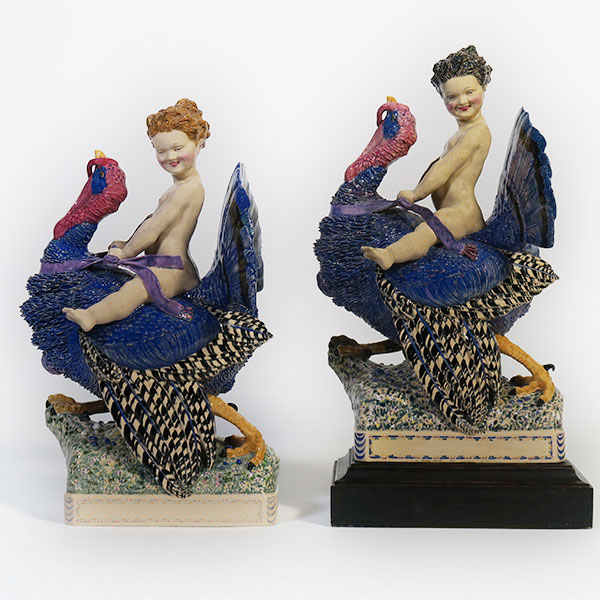
Boys on Turkeys H. Parr
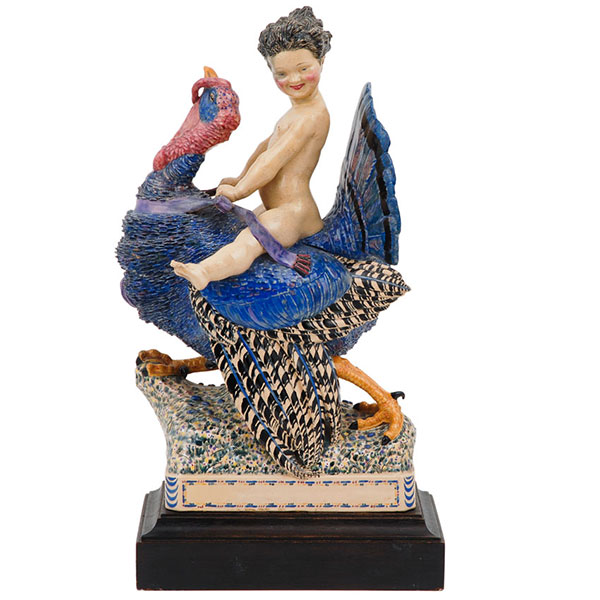
Boy on Turkey H. Parr
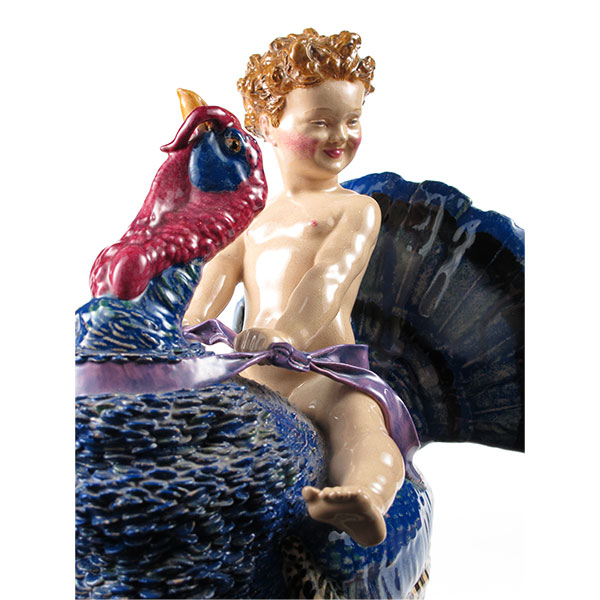
Boy on Turkey H. Parr Detail
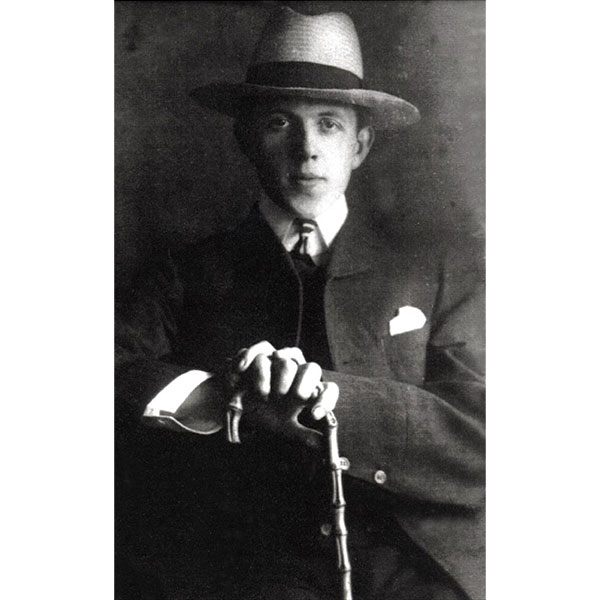
Harry Parr
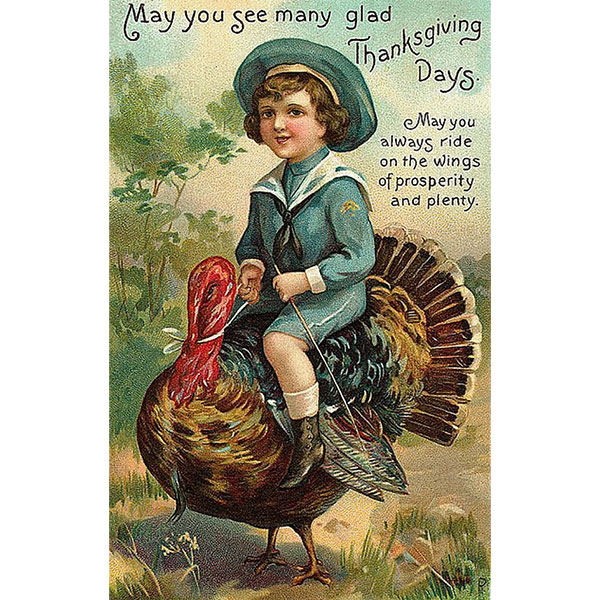
Vintage Thanksgiving Card
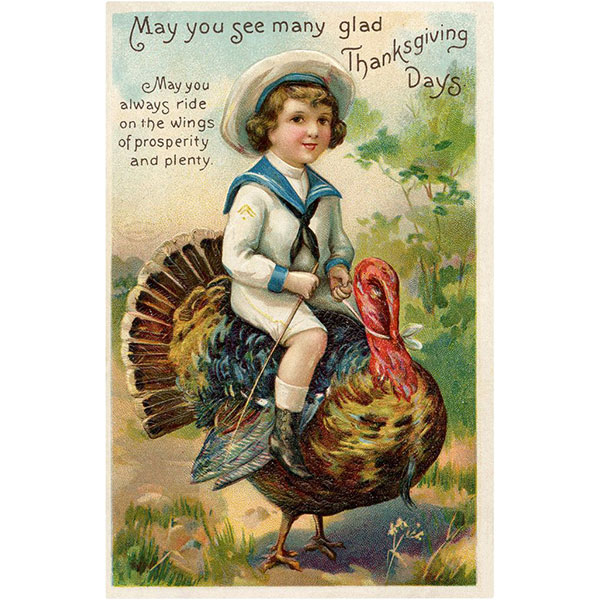
Vintage Thanksgiving Card
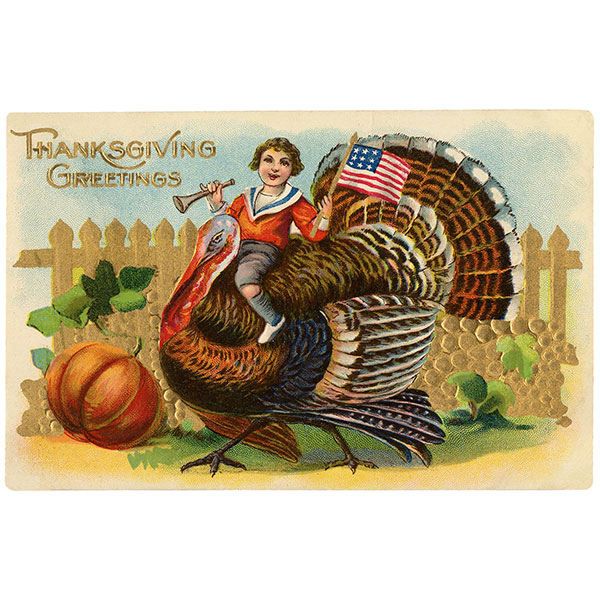
Vintage Thanksgiving Card
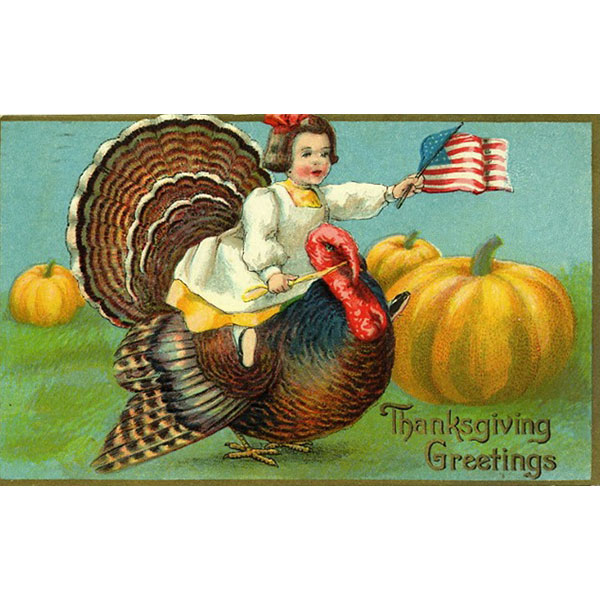
Vintage Thanksgiving Card
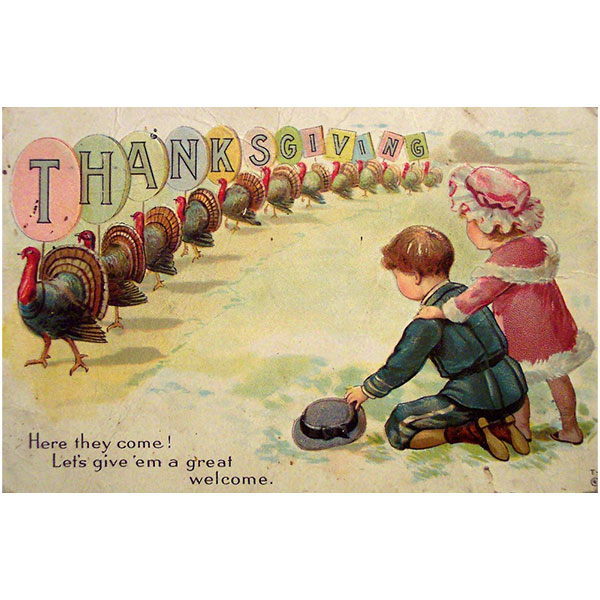
Vintage Thanksgiving Card
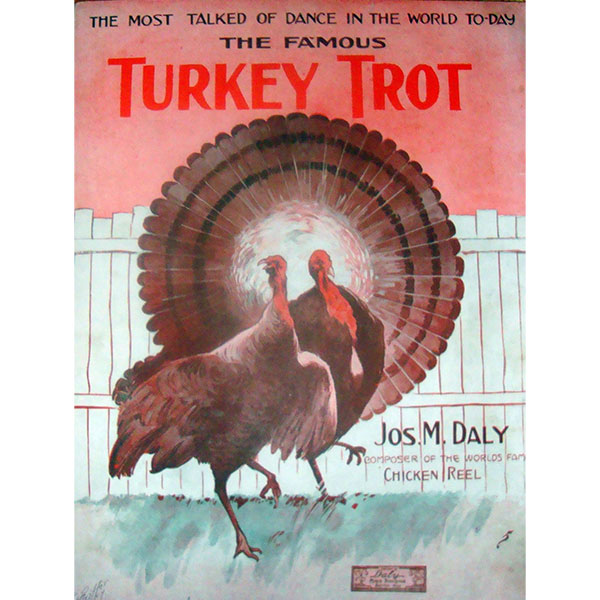
Turkey Trot Dance Music
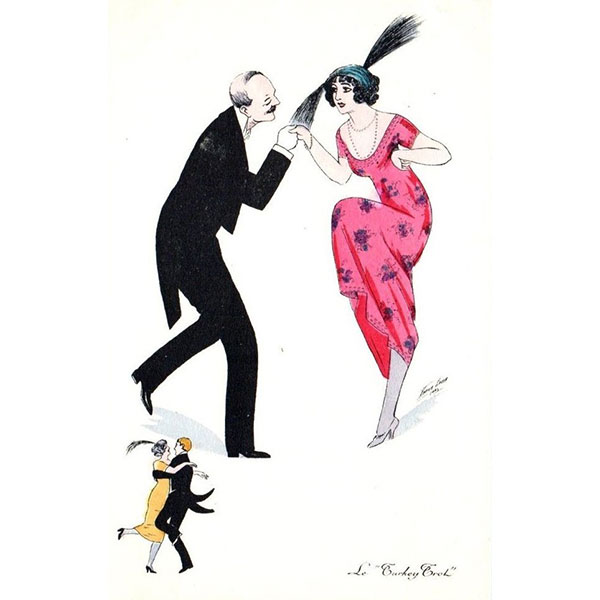
Turkey Trot Dance
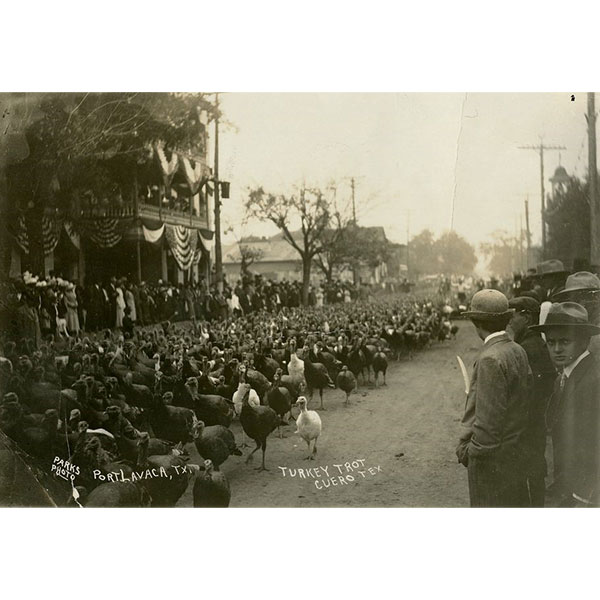
Turkey Trot Texas
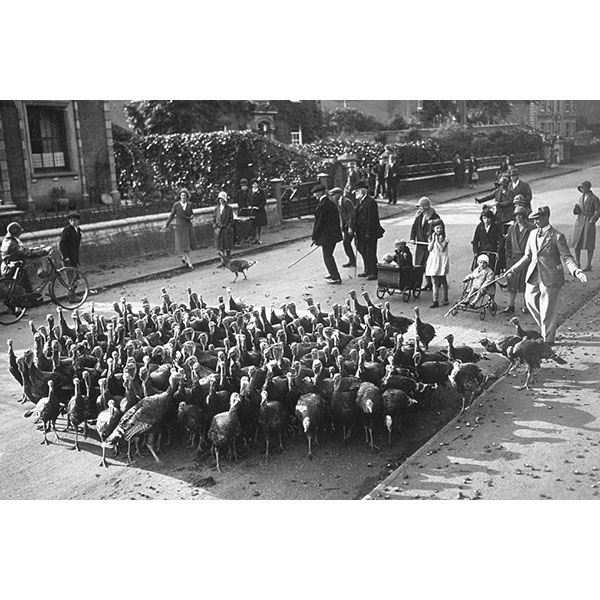
Turkey Drive England
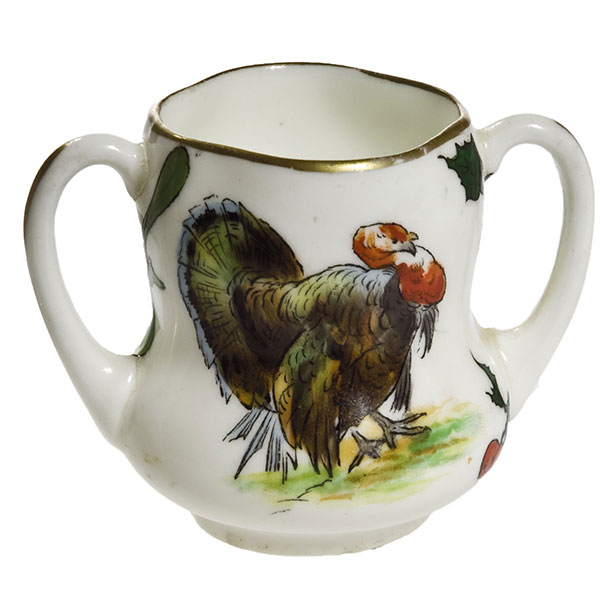
Royal Doulton Miniature Loving Cup
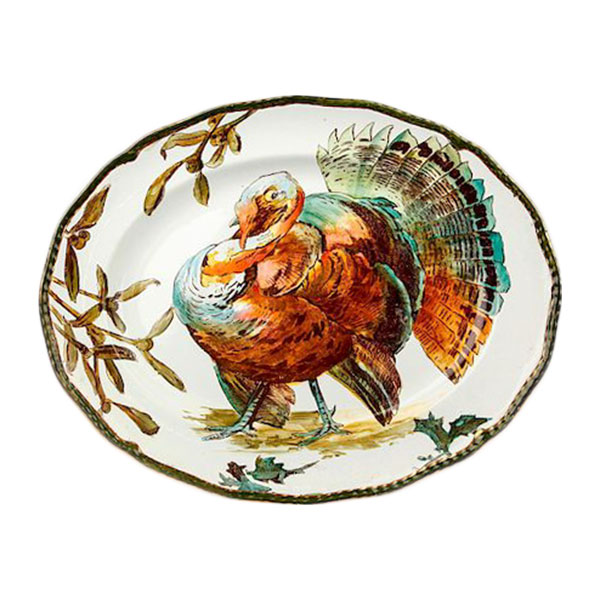
Royal Doulton Turkey Platter
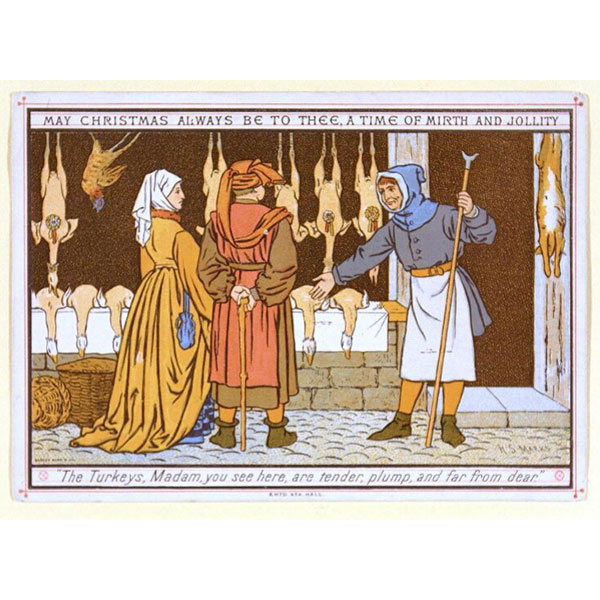
Victorian Christmas Greeting Card H. S. Marks
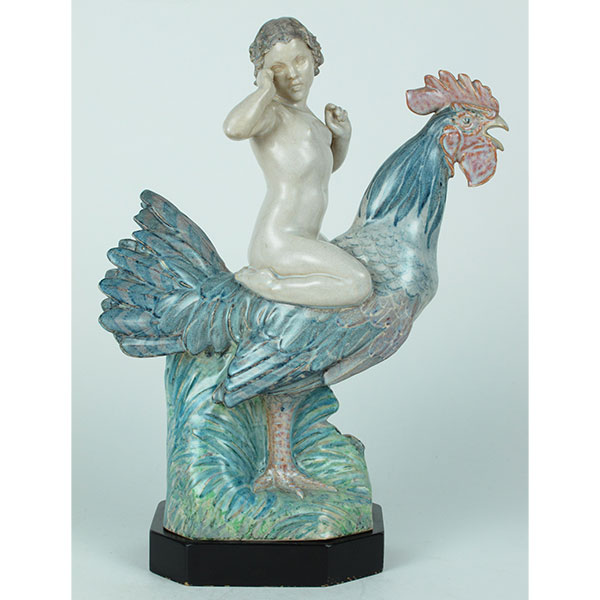
Sleeper Awakes C. Vyse
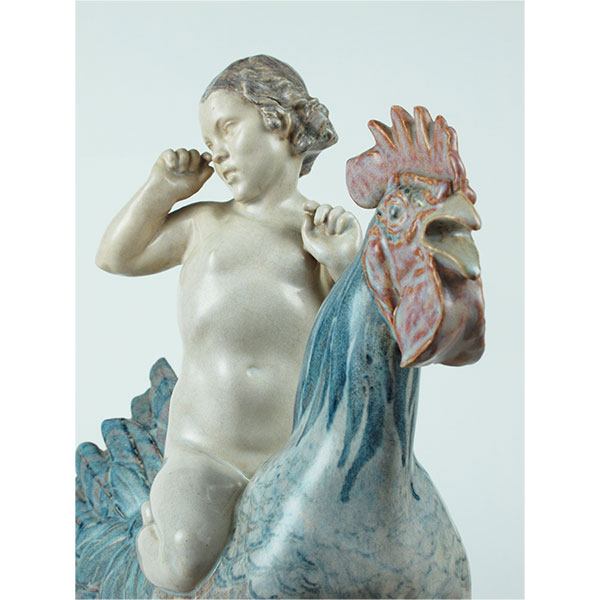
Sleeper Awakes Detail C. Vyse
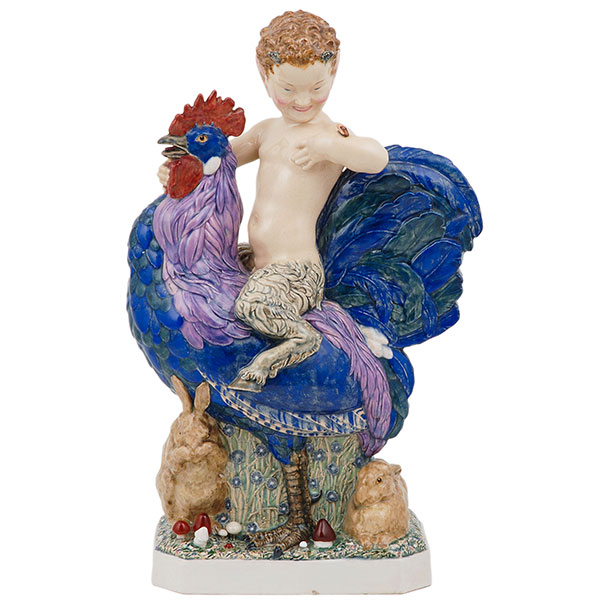
Chanticleer H. Parr
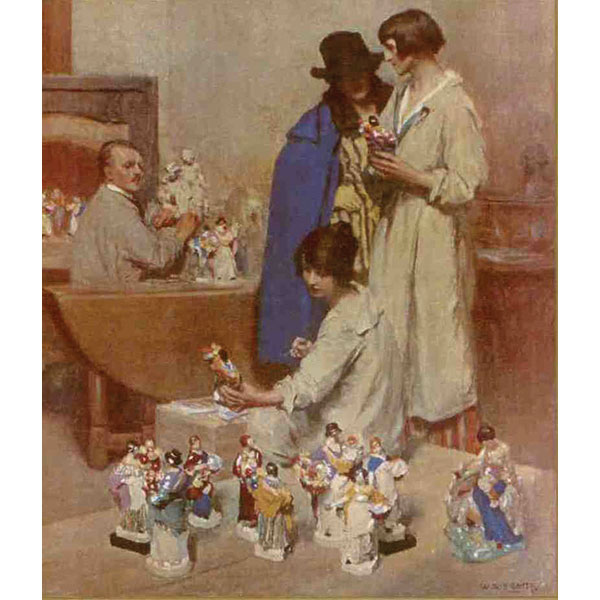
Charles and Nell Vyse W. R. S. Stott
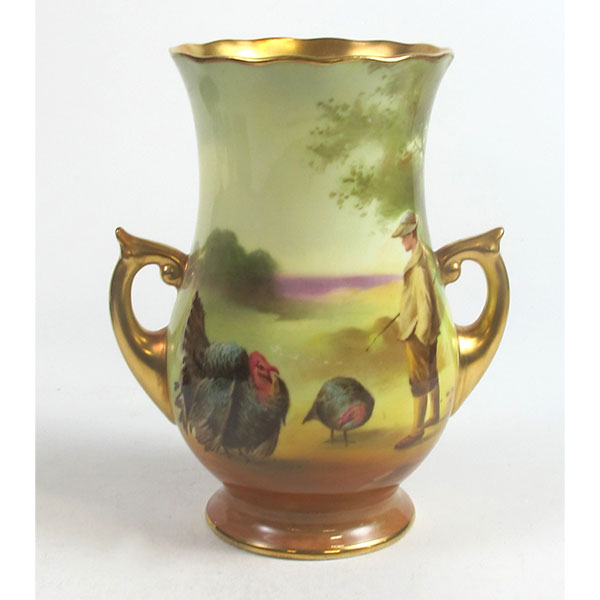
Royal Doulton Vase H. Piper
